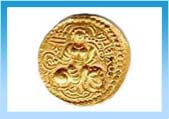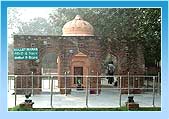| Call Us Fax No. |
+(91) - 9717929990 +(91)-(124)-4635544 : mail@toptravelindia.com, topindia@gmail.com |

| Call Us Fax No. |
+(91) - 9717929990 +(91)-(124)-4635544 : mail@toptravelindia.com, topindia@gmail.com |

| Home | About us | Hotels | Car Rental | India Holidays Tours | International Holidays |

Service |

 The
ancient history of India starts with the Prehistoric period (400,000 BC –
2,500 BC) comprising the Paleolithic Age, Mesolithic Age, Neolithic Age and
Chalcolithic Age. The Vedic Age and the legendary Epic Age make the ancient
history as diverse as ever. Next followed the Mauryan Dynasty (322 BC –
185 BC) which was established by Chandragupta. It was also around this time
that the invasions by Bactrian Greeks, Parthians, Shakas and Kushans took
place. Other major periods that constitute the ancient history include the
Gupta Era (320 AD – 520 AD) and age of the southern kingdoms including
the rule of Chalukyas, Pallavas and Pandavas.
The
ancient history of India starts with the Prehistoric period (400,000 BC –
2,500 BC) comprising the Paleolithic Age, Mesolithic Age, Neolithic Age and
Chalcolithic Age. The Vedic Age and the legendary Epic Age make the ancient
history as diverse as ever. Next followed the Mauryan Dynasty (322 BC –
185 BC) which was established by Chandragupta. It was also around this time
that the invasions by Bactrian Greeks, Parthians, Shakas and Kushans took
place. Other major periods that constitute the ancient history include the
Gupta Era (320 AD – 520 AD) and age of the southern kingdoms including
the rule of Chalukyas, Pallavas and Pandavas.  A
crucial period in the history of India began with the arrival of the
Britishers here. They started with setting up spice trade centres in various
parts of the country. It was during 1857 AD that the Mutiny was spearheaded
by Mangal Pandey. By the end of 1858 AD, the Company Rule had already ended
as the British Crown took over. Presidencies were formed and then was
applied the poignant policy of 'Divide and Rule'. The British Raj in the
country spanned from 1858 AD to 1947 AD. The Indian National Movement and
the Quit India Movement were the weapons used to chase the Britishers away
for once and all. And finally India gained her independence on 15 August,
1947.
A
crucial period in the history of India began with the arrival of the
Britishers here. They started with setting up spice trade centres in various
parts of the country. It was during 1857 AD that the Mutiny was spearheaded
by Mangal Pandey. By the end of 1858 AD, the Company Rule had already ended
as the British Crown took over. Presidencies were formed and then was
applied the poignant policy of 'Divide and Rule'. The British Raj in the
country spanned from 1858 AD to 1947 AD. The Indian National Movement and
the Quit India Movement were the weapons used to chase the Britishers away
for once and all. And finally India gained her independence on 15 August,
1947. | India Destination | Tourist Attractions | India Holidays Tours | Neighbouring Country | India Travel Guide |
|
© Sai Holidays. All Rights Reserved (Terms
of Use) |